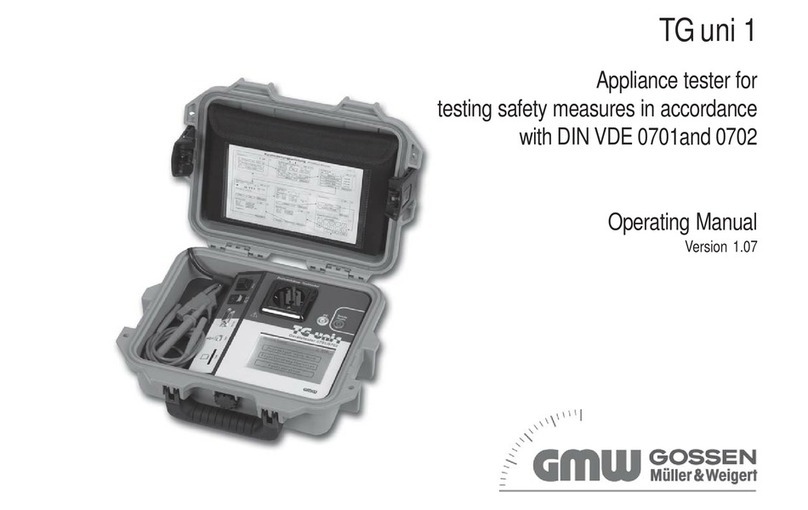
www.g-mw.de6
1 General safety and warning notices
The„TG Basic 2 (+)“ test device was built and tested to the following safety regulations:
• DIN EN 61010-1 (VDE 0411 Part 1),
• DIN EN 61010-2-30; VDE 0411-2-030
„Safety requirements for electrical equipment for measurement, control, and laboratory use,
General requirements“
• DIN VDE 0404 Part 1 and Part 2,
„Devices for testing the safety measures of electrical equipment“
• Interference immunity in accordance with DIN EN 61326,
„Electrical equipment for control and laboratory use - EMC requirements“
To maintain this level of safety and ensure danger-free operation, users must heed the following
warning notices:
All tests must be performed by a specialist or an electrically trained
person under his or her direction and supervision. The user (tester)
must have been instructed by a specialist in conducting and
evaluating the test! TRBS 1203 stipulates the precise requirements
that must be met for this.
The test device must be used for the intended purpose to ensure the safety of the tester,
test device and test object.
Heed the warnings on the test device and the mains adapter cables!
The he device must only be operated on a 230 V AC mains fused with max. 16 A!
It is not suitable for testing electrical installations!
All texts, illustrations and technical specications were compiled with care. In spite of this care, errors
cannot be ruled out entirely. The author and the manufacturer of the test device cannot assume legal
responsibility nor any liability for incorrect information and the consequences thereof!
This operating manual must be read carefully and fully before using
the test device. Make the operating manual available to all users.
Unfused measurement circuits must not be measured!




























